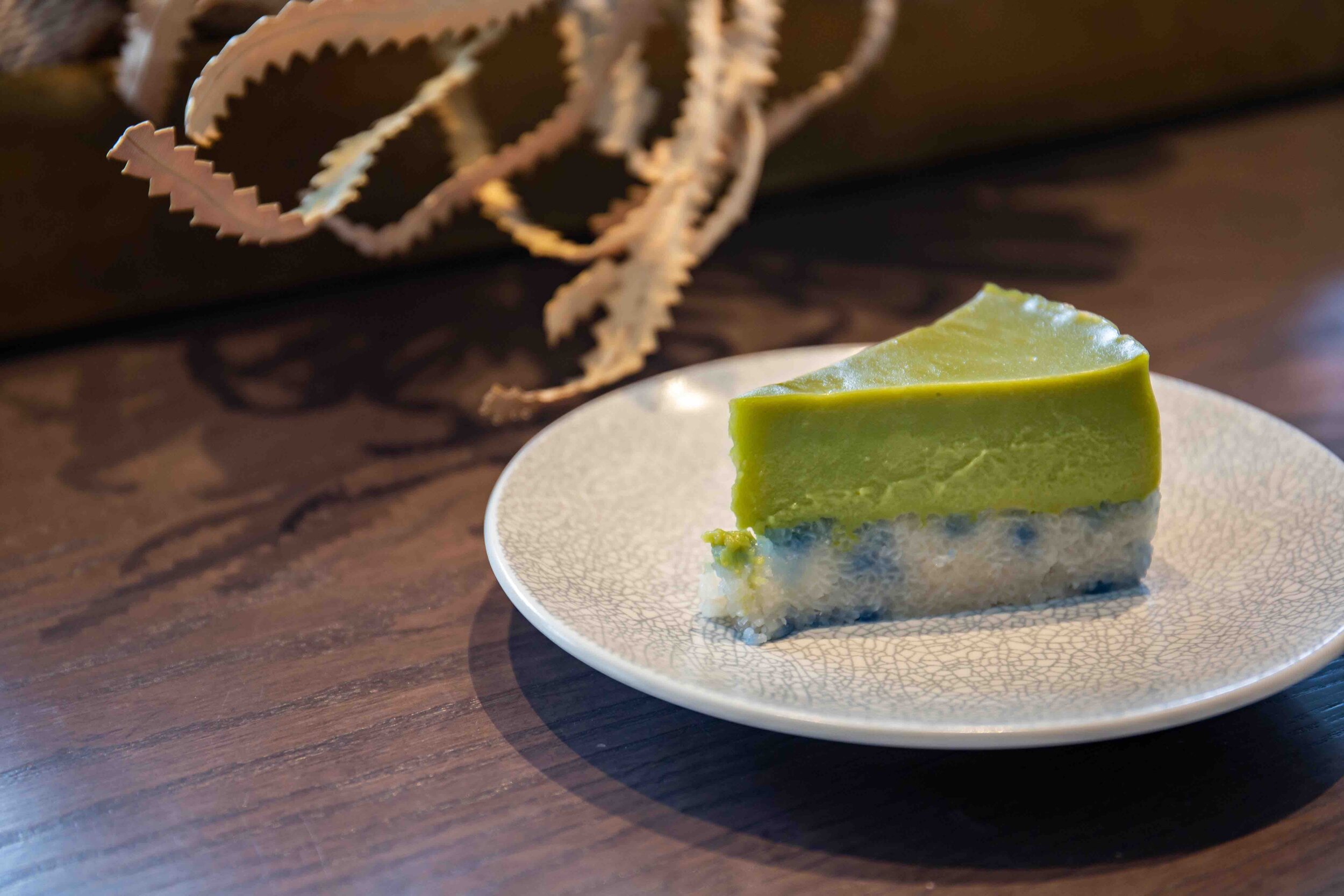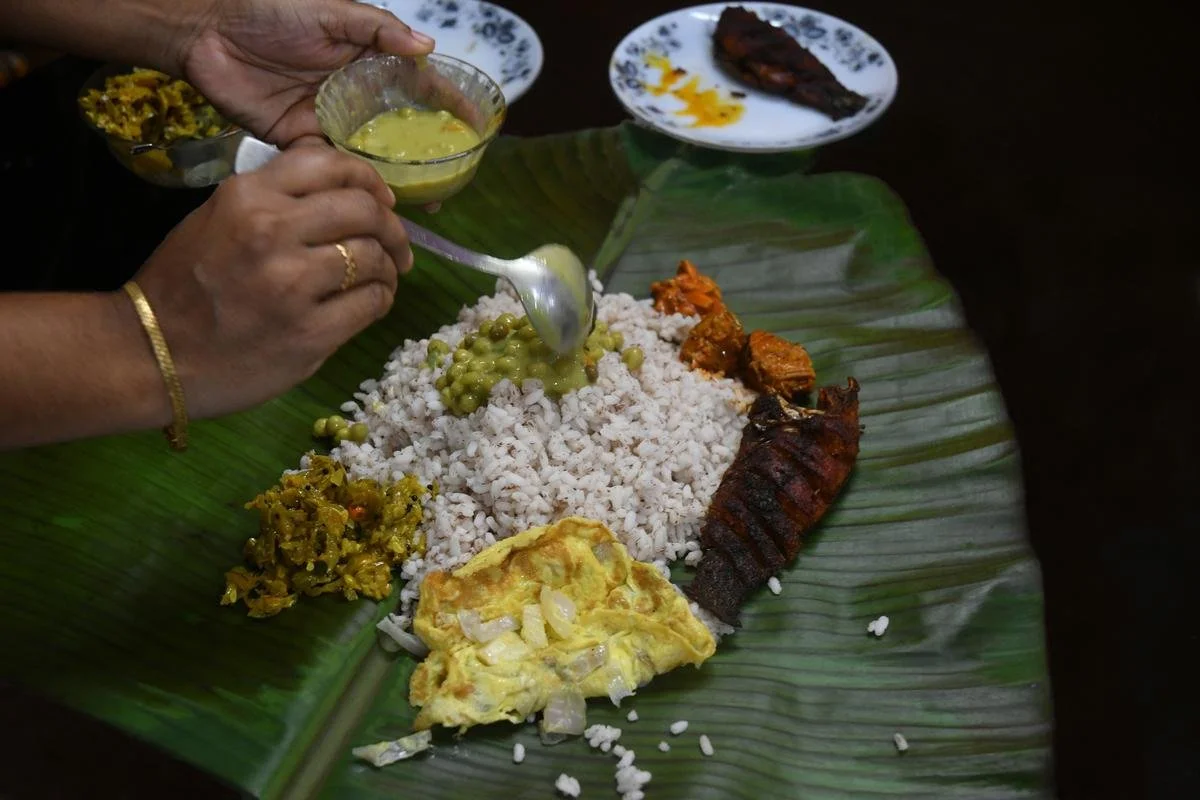Exploring Kueh Culture in Singapore

Amandeep Kaur captures the beauty of sweet kueh, bite-sized snacks that are an integral part of Singapore’s culinary identity.
A whiff of steaming pandan leaves is probably the easiest way to find a kueh shop close to you. Pandan is an essential ingredient used to prepare kueh along with coconut, rice, tapioca, and palm sugar, often referred to as gula melaka. Originating in Southeast Asia, kueh, translated as cakes in Malay, are morsels of snacks, both savoury and sweet.
Kueh are a perfect representation of the food diversity yet interrelation that exists across borders in Southeast Asia. Travelling through this region, you'll often see similar dishes with a little of the country's own cultural identity imbibed in them. While kueh originated in different countries in Southeast Asia, they were made famous by the Peranakan settlers in the Malay archipelago who adopted them and made them their own. Often, you'll hear them referred to as Nyonya Kueh, Nyonya representing the Peranakan women who made them.
Kueh in all their shapes and colours at Tiong Bahru Galicier Pastry
In this photo essay, we travel to Singapore to delve into the multi-hued world of some of the sweet rice-based kueh from different cultures, that have made this bustling island their home. While the jury is still out on the precise origins of some of these kueh, today they form an essential part of Singapore's food culture.
Ondeh Ondeh
Ondeh Ondeh is also referred to as klepon in Java, Indonesia, where it is originally from. Finely crushed palm sugar is encased in a pandan extract infused rice flour dough, rolled into balls and boiled in water until they float atop. These moist and delicate molten palm sugar balls are then rolled in grated coconut and best enjoyed in one mouthful.
Ondeh Ondeh from Rumah Bebe, East Coast Road
Kueh Lapis Sagu
This kueh is steeped in nostalgia, and resemble a box of perfectly-arranged colour pencils. Made primarily with rice flour, tapioca flour, coconut milk and sugar, each coloured layer is set before the next one is added to create this multi-layered kueh. Once layered, they are steamed and best enjoyed peeled layer by layer. Given its colours and soft, springy texture, this one is a favourite among children.
Lapis Sagu from Rainbow Lapis, People's Park Center
Ang Ku Kueh
Translated as red tortoise cakes in Hokkien, this oval-shaped kueh originated in Fujian, China. In the traditional recipe, red glutinous rice skin — signifying good luck — is wrapped around a mixture of mung beans paste or coarsely ground peanuts with some sugar. This is then shaped in a tortoise mould with the Chinese character for longevity imprinted on it, and steamed over a piece of banana leaf. Today, one can find ang ku kueh in an array of colours, flavours and filings.
Assorted Ang Ku Kueh at Lim Lam Hong Confectionery, Jalan Bukit Merah
Ang Ku Kueh prep in progress. Lim Lam Hong Confectionery, Jalan Bukit Merah
Ang Ku Kueh preparations for baby's full moon celebration. Dome shaped for baby boys and tortoise shells for girls
Tutu Kueh
These powdered steamed rice cakes with a filling of coconut and gula melaka, peanuts, or more recently, dark chocolate chips, originated right here in Singapore in the 1930s. The recipe has its origins in Song Gao, a rice flour-based cake from Fujian, China where Tan Yong Fa, the creator of the dish was from. He reinvented the original recipe and sold it in smaller sizes with its unique flower mould. The business started on little pushcarts with charcoal steamers that made a sound similar to 'tu tu' when the water boiled and that's how these kueh found their name.
Tan's tu tu kueh are laboriously steamed just six at a time. Best enjoyed steaming hot.
Tan's tu tu coconut cake, Havelock Road
Putu Piring
Putu piring and tutu kueh may look very similar, but they have distinct tastes, textures and origins. Putu piring is said to have originated from putu, a rice flour-based dish in Kerala. What makes putu piring different from tutu kueh apart from the shape, is the stuffing of gula melaka only that melts into the rice flour once steamed. The finished dish is served with generous spoonsful of freshly grated salted coconut, which gives the sweetness a perfect balance in every bite.
Steaming putu piring at the Traditional Haig Road Putu Piring, Haig Road
Putu piring topped with fragrant pandan leaves at Traditional Haig Road Putu Piring, Haig Road
Yi Bua
A kueh with Hainanese origin, yi bua might look like any other rice-based kueh from the outside, but the filing is what makes it unique. Rice flour dough is stuffed with a generous mixture of coconut, palm sugar, ginger, sesame, roasted peanuts and dried persimmons. It is then skillfully wrapped in a banana leaf and steamed. The pungent flavour of ginger stands out, and the taste is sweet and savoury on the palate. Traditionally served on celebratory days, the red dot on top is added as a mark of good luck.
Yi Bua at Hainanese Coconut Kueh, Lor 7 Toa Payoh
Kueh Salat
Kueh Salat is so well-loved, it has made its way into cafes, speciality cake shops and even a Michelin star Peranakan restaurant in Singapore. A layer of lightly salted glutinous rice is combined with coconut milk and stained with blue pea flower in parts. This is topped with a coconut pandan custard made with pandan juice, eggs, coconut milk and sugar and steamed. This two-layered cake is also called 'seri muka' in Malay meaning a beautiful face, suggestive of the smooth layer of custard atop once steamed.
Kueh Salat by MrsKueh at Clan Cafe, Bukit Pasoh Road
Kueh Bugis
Kueh Bugis is named after the ethnic group of South Sulawesi, Indonesia, the creators of this kueh. A blanket of pandan-inked, chewy glutinous rice and coconut milk dough is wrapped around a generous portion of grated coconut and thick gula melaka syrup. Another variant of this called kueh bugis mandi is served soaked in thick coconut milk.
Made to order Kueh Bugis from Makan House by Ollella, Race Course Road
Kueh Pisang
Also called Nagasari in Indonesia, kueh pisang literally translates as banana cake. Slices of ripe banana are tucked into thick coconut milk and rice flour batter, then wrapped into banana leaves packets and steamed. The outcome is a soft pudding-like texture with a slight bite from the steamed banana.
Kueh Pisang from Glory Catering, East Coast Road
Kueh Wajik
Said to have originated in Malaysia, these kueh take their name from the diamond shape in which they are usually cut and served. Pre-steamed glutinous rice is further cooked in a pandan-flavoured concoction of coconut milk and palm sugar until the rice thoroughly absorbs the syrup. Wajik is said to be an essential part of Malay wedding celebrations.
Kueh Wajik from Makan House by Ollella, Race Course Road
Amandeep Kaur is a Bangalore-bred food enthusiast currently living in Singapore. She works with a South Indian restaurant and loves all things ceramics, cookbooks, and coffee. Find her food journey at @epikaur
ALSO ON THE GOYA JOURNAL


























